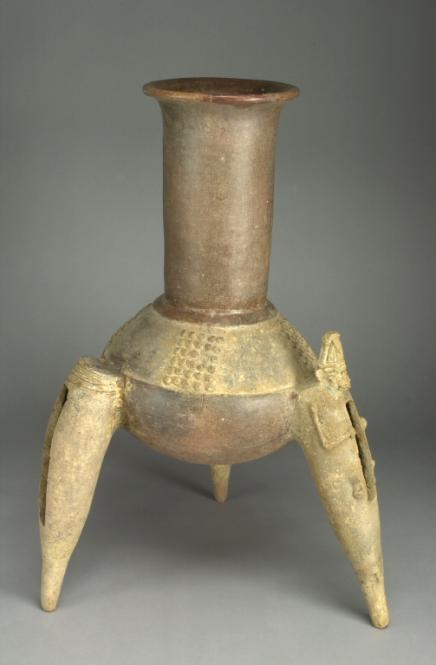
Object Title
Large Tripod Jar with Modeled Human Imagery
Measurements
26 1/2 x 17"
Creation Date
AD 300-800
Credit Line
Gift of the Collection of Frederick and Jan Mayer
Museum Name
Museum Contact
provenance@denverartmuseum.org
Culture
Country of Origin
Object Type
Materials / Techniques
Museum's Definition of Antiquity
Before 1550
Provenance Information
(Enrique Vargas-Alfaro) [1915-2008], San Jose, Costa Rica and Atlanta, GA; Purchased by Frederick R. [1928-2007] and Jan Mayer, Denver, CO, May 28, 1972 [1]; Gifted to the Denver Art Museum, 2017
[1] On loan to the Denver Art Museum, 1992
[1] On loan to the Denver Art Museum, 1992
Exhibition Information
On display in Museum's Pre-Columbian Galleries, 1996-2017
Publication Information
Abel-Vidor, Suzanne, et al. Principales Tipos Ceramicos de la Gran Nicoya. 13 (1/2):35-327. Vinculos. San Jose, Costa Rica: Museo Nacional de Costa Rica. 1987., Lange, Frederick W., Payson D. Sheets, Anibal Martinez, and Suzanne Abel-Vidor, eds. The Archaeology of Pacific Nicaragua. Albuquerque, NM: University of New Mexico Press. 1991.
Section of the AAMD Guidelines relied upon for the exception to 1970
Gift or bequest expected or on loan prior to 2008
Explain why the object fits the exception set forth above
The Mayer collection of Costa Rican art distinguishes itself from other national and international collections for the depth and breadth of cultural and artistic styles represented therein. Assembled beginning in 1966, the objects represent the developmental arc of Costa Rican ceramics, metallurgy and stone carving and stands as the most comprehensive collection of Central American material culture outside of the region. Mr. and Mrs. Mayer began lending works in this gift to the Denver Art Museum in 1992 and since loan of this work in 1992, it has been on continuous display until 2017 in the Art of the Ancient Americas galleries. This gift complements the collection of Costa Rican material, also gifted by Mr. and Mrs. Mayer with the express purpose that the objects remain together in order for scholars to appreciate fully the development of Central American art, allow work to be put in the public domain, and facilitate further research.